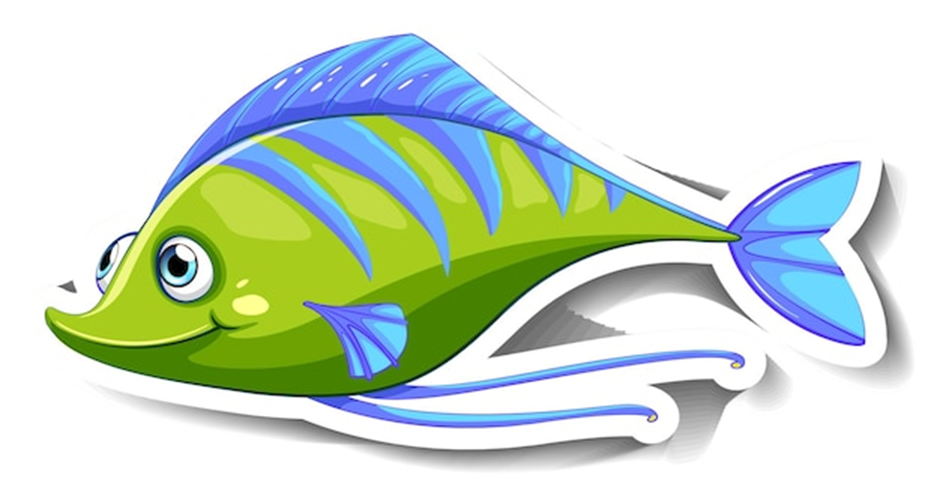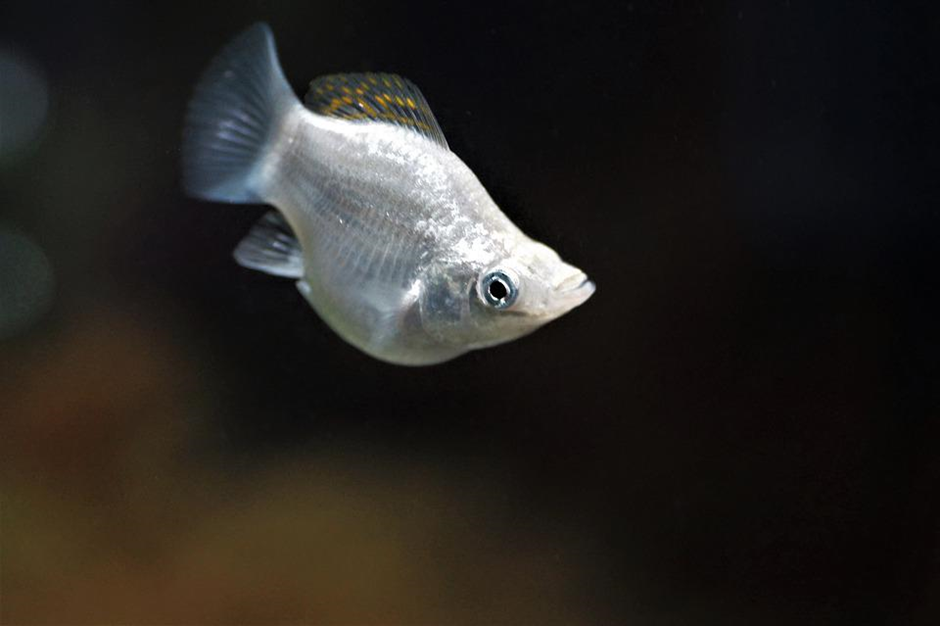9 Species of freshwater aquarium fish
First of all, congratulations! Fish farming is a beautiful and fun hobby.
This guide aims to introduce you to 9 species of freshwater fish that you will often find in pet stores. You can see how they look and begin to understand their behavior and care conditions to make the first choice.
Also Read: Drawing For kids
Some are light, durable, and ideal for beginners, while others are more suitable for regular aquariums.
1-Betta / fighter
Here is a fish that even those who have never had an aquarium know: a fighter. Unfortunately, there is a lot of misinformation, which is why these fish are often kept in poor conditions.
A warrior is a very tough fish, but that doesn't mean he can last anything. It needs a 20-liter aquarium and proper care, that is to say, at least one water change per week.
The fighter must be alone, without other fish, because it is very aggressive. This observation applies to both men and women and between men and women. If your aquarium is much larger than 20 liters, you can keep it with other fish as long as they are calm. The fighter is excellent but poorly equipped for swimming, and fish that are too lively orbiting can stress him.
There is a lot to say about a warrior, so you will find many articles related to his subject on this site to sort out the good from the wrong information.
2-Guppy
Guppies are among the iconic aquarium fish. Their durable construction, bright colors, and ease of care make them excellent even for novice aquarists.
Guppies are small, but this is why they should not be reserved for nano aquariums. Indeed, guppies live in harems: count 3 females for one male. This ratio is important because men can be very oppressive. They are also known to reproduce very easily. A few guppies quickly become a whole flock.
Guppies have a lively and peaceful nature, suitable for a community aquarium. The presence of larger fish also limits their reproduction. However, avoid accompanying them with aggressive fish that tend to tear their fins or fish, such as barbs.
Today's guppies have been bred and selected for generations to develop beautiful colors and be easy to care for. They are insectivorous and vermivorous. They are delighted with commercial food but sometimes appreciate live food: mosquito larvae, bloodworms, etc.
The diversity of colors also makes it possible to change varieties in various aquariums. Some enthusiasts even aim to develop new colors.
3-Guppy endler
The last guppy is similar in behavior to the common guppy. He also stays in the harem (1 male for three females) to prevent the male from chasing a single female and tiring her out. He is sociable and needs a group to be safe.
The last guppy is peaceful with other species and is more likely to be hunted due to its small size. Therefore, to avoid predation risk, it is necessary to avoid accompanying it with large species. He doesn't care about other fish of similar size.
The volatile tend to jump, so it should not be placed in an open aquarium. Also Read:
Kids Education
Like the ordinary guppy, the last guppy was chosen to offer a variety of colors. The woman is bigger than the male, and the coat is plain. It is also impossible to distinguish it from a female Poecilia reticulata.
4-blue neon
Blue neons are very energetic fish that make beautiful schools when they have enough. These must be kept in schools of at least 10 people. The more they are, the better they feel!
Neon is omnivorous with a carnivorous disposition. It is sensitive to water quality and gets sick quickly if the aquarium is neglected, especially if the water changes are not regular enough.
5-Molly
Molly is very popular with guppies for similar reasons: it has many different colors, is hardy, peaceful, and breeds quickly. However, it is more extensive and is necessary for an aquarium with a minimum volume of 120 liters.
There is also a "lyre" variety with a tail in the form of a lunar arch.
Molly lives in a harem, two women and one man. She is also sociable, so plan at least two harems. Since the male is smaller and more colorful, it is pretty easy to distinguish the males from the females.
It covers the surface and middle of the aquarium. Provide a decor of bushy plants, stones, and roots to allow females to hide.
It is ubiquitous and readily accepts commercial dry foods. It is helpful to diversify their diet with live insects and sometimes with the addition of blanched vegetables.
6-Goldfish
Goldfish are a wonderful aquarium classic that is oddly interesting to anyone who doesn't want to deepen their aquarium hobby. These people think this is the easiest fish wrong. Because, like the fighter, the goldfish suffers from misconceptions.
First of all, goldfish are in packs, so they should be kept in groups of at least five fish. Also, count a volume of 40-50 liters per fish. The minimum aquarium to house goldfish should therefore be 200 liters!
A goldfish can reach 20 centimeters in an aquarium when it has enough room to grow and survives long enough.
Goldfish are a significant pollutant. That's why you need a filter that holds the tank and is maintained regularly. It also likes aquarium plants, and few plants resist it… Goldfish aquariums are thus left bare with artificial decorations or a few hardy plants such as anubias.
7-Zebrafish

The danio rerio is instantly recognizable thanks to its stripes that earned the nickname "zebrafish." There are also varieties available at pet stores with leopard-like spots instead of stripes.
It is an active freshwater fish, at peace with its congeners and other species, in packs (takes at least a group of 5). The larger the flock, the bolder it will be and show itself in the aquarium.
It is a very hardy fish that has not undergone much selection and is not very demanding on the parameters of the water, such as pH, hardness, or temperature.
Danio rerio is carnivorous. It is recommended to provide it with dry food and replace it occasionally with live, frozen, or freeze-dried insects.
8-Oscar
Oscar is the fish of excess. Although relatively rare and often hidden, it can be found in tabby or albino form pet stores. And fortunately, it is an exceptional fish! First of all, because it is a giant for our aquariums: it can grow up to 35 centimeters. Requires an aquarium with a volume of more than 800 liters.
Character varies a lot from one Oscar to the next: some social, some aggressive, some calm, some more lively... Oscars are kept together when young can form a group, but freshness causes some aggression.
Oscar is a greedy fish that eats everything he finds. It is highly recommended not to keep it in a community aquarium as it has an instinct to hunt anything much smaller than it is! It can also kill species of the same size. Keeping plants is also tricky. Oscar plants easily overturn the aquarium by moving sand and stones.
9-Glass catfish
Glass catfish cannot be confused with other species, as its appearance is unique. This fish has no dorsal fin and pigmentation, so it is transparent except for the head and bones.
The glass catfish is a peaceful schooling fish and is even relatively shy. The group must consist of at least 6 specimens that will swim together in a strict school. It also appreciates having shade, so it can be interesting to provide many aquarium plants and surface plants.
The glass catfish is omnivorous with a carnivorous disposition. It does not pose any difficulty in tours of food, and dehydrated foods are sufficient, but as with other types, it is recommended to be given regularly with live or frozen foods.












0 Comments